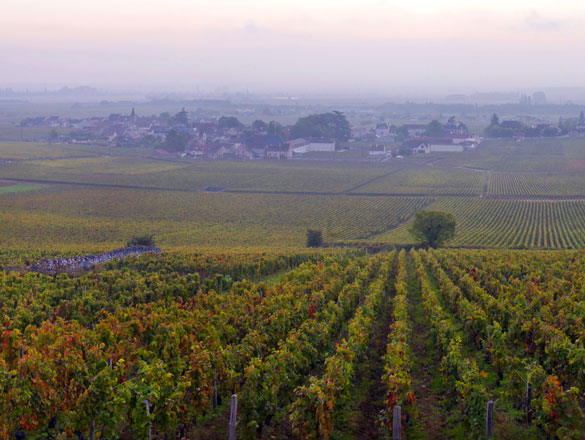

The vineyards of Bourgogne produce some great wines with a historical and international reputation. However, the region is not simply limited to its iconic appellations. In addition to its Village Premier Cru and Grand Cru AOCs, it also produces a range of wonderful Régionale and Village appellations to explore.
You will also find a full list of the Bourgogne’s Climats and lieux-dits on this page.
Check out the complete list of the 84 Bourgogne appellations.
However, your exploration has only just begun. Bourgogne wines have never before offered such high quality. Besides our range of internationally celebrated wines, try some of our lesser-known appellations where there are lots of surprises in store.
And for a fun way to find out more about the wines on offer, try out our “Which Bourgogne wine is right for me?” quiz, or check out Bourgogne Maps to take an interactive tour of the region.
Village appellation
VIGNOBLE DE LA CÔTE DE NUITS
Reds only - Pinot Noir.
Area under production*:
1 hectare (ha) = 10,000 m2 = 24 ouvrées.
149.47 ha (including 56.01 ha Premier Cru).
Average annual yield**:
1 hectolitre (hl) = 100 litres = 133 bottles.
5,584 hl (including 1,962 hl Premier Cru).
*In 2022 **5-year average, 2017-2021
Appellation Village of the Côte de Nuits region (Côte-d’Or).
This appellation includes 14 Premiers Crus Climats.
Producing communes: Vosne-Romanée, Flagey-Echezeaux.
The commune of Vosne-Romanée produces 6 Grands Crus and the commune of Flagey-Echezeaux 2 Grands Crus (see Appellation sheets Nos. 38 and 63).
On the label, the appellation VOSNE-ROMANÉE and VOSNE-ROMANÉE PREMIER CRU may be followed by the name of the Climat of origin.

Shades of red vary from pure ruby to black tulip and are often quite intense. At other times the wine is a fiery red darkening to garnet with a touch of crimson. Ripe fruit over spices is frequently the main ingredient of the bouquet, modified by the presence of strawberry, raspberry, bilberry, or blackcurrant. These refined and well-blended aromas evolve with age into cherries-in-brandy, preserved fruits, leather and fur, and gamey/woodland scents. On the palate the wine is velvety and distinguished - the Pinot Noir at the top of its form. The wine may seem a little austere in its youth; it needs time in the bottle to develop structure and fleshy texture. Often fullbodied and voluptuous, this wine is the equivalent of a Rubens nude.

The powerfully tannic but nevertheless perfectly smooth build of this spicy, opulent, and meaty wine inclines it towards strongly-flavoured meats with a markedly fibrous consistency which the wine can tame and envelop. Goodquality poultry, lamb (patiently oven-roasted), and roast feathered game are easy first choices. But a thick cut of lean, firm-textured beef will match the wine’s fullness, while spicy couscous with poultry will be equally delighted with such a wine for company. A less obvious pairing - foie gras poêlé - also has its advocates amongst serious foodies. This wine has a sufficient force of personality to accompany intensely-flavoured cheeses such as Epoisses, Langres, Saint-Florentin, or Aisy cendré, as well as Cîteaux.
Serving temperature: 14 to 16°C.

“Bourgogne has produced nothing better than this little corner where all her charms come together”. So wrote Gaston Roupnel Burgundian author, celebrated historian of the French countryside. This “central pearl in Bourgogne’s necklace” harbours fabled Grands Crus: ROMANÉE-CONTI, ROMANÉE SAINTVIVANT, LA ROMANÉE, LA TÂCHE, LA GRANDE RUE, RICHEBOURG, and, in the neighbouring commune of FLAGEY-ECHEZEAUX, ECHEZEAUX and GRANDS ECHEZEAUX. Close to this paradise, the appellation Village VOSNE-ROMANÉE and its Premiers Crus express the Pinot Noir grape at its heavenly best.

The plots growing the communal appellation lie either at the top of the slope or at its foot on either side of the Grand Cru Climats and in some cases reaching the same altitude. The soils are limestone mixed with clayey marls. Depth of soil varies from some tens of centimetres to 1 metre deep. The exposure is easterly.
